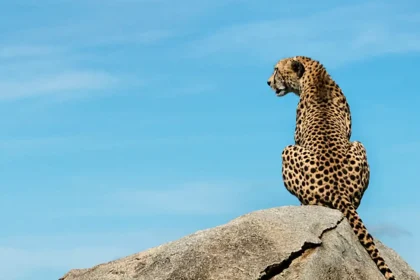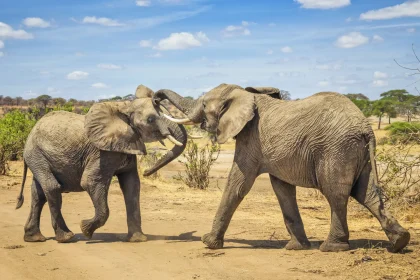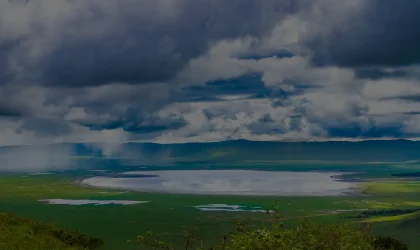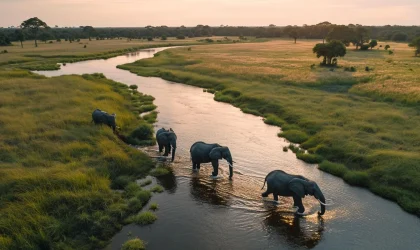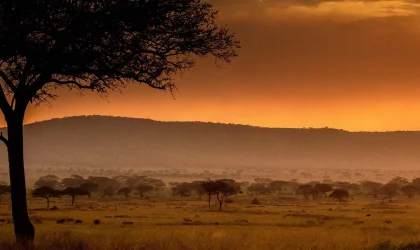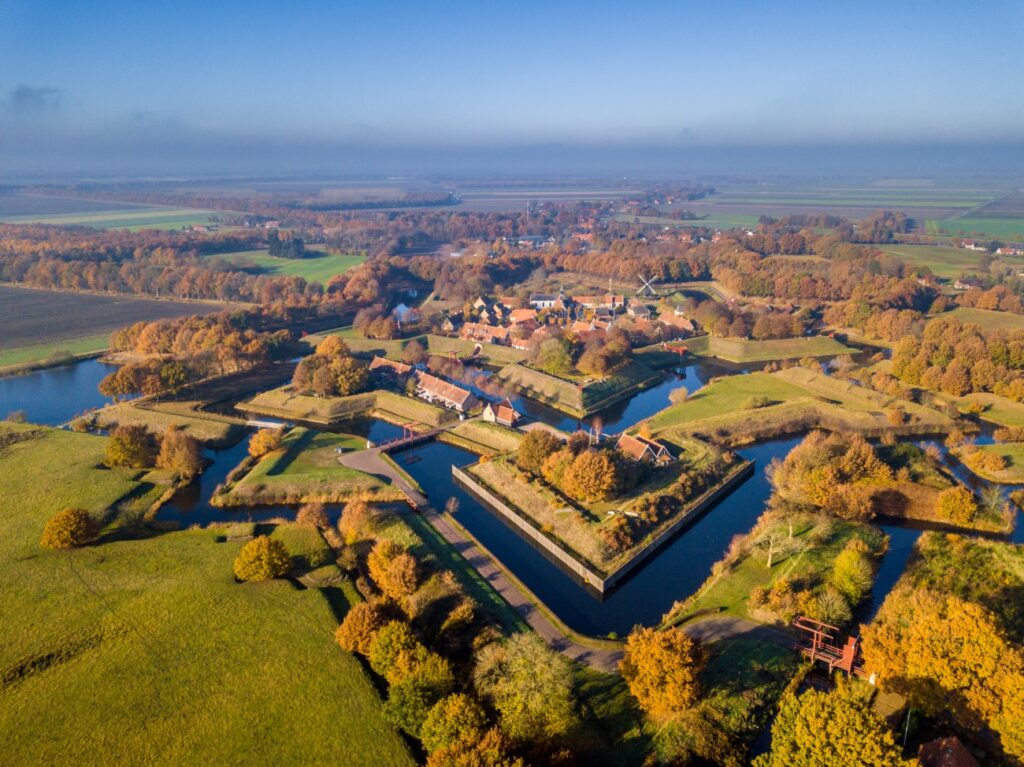
Tanzania’s Best-kept Safari Secret

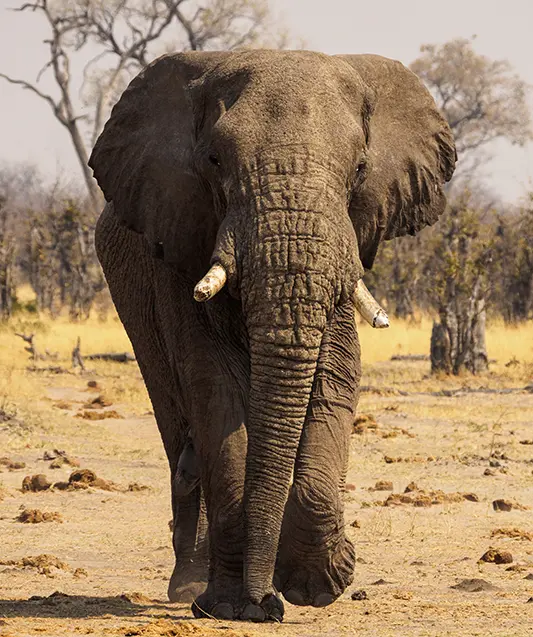
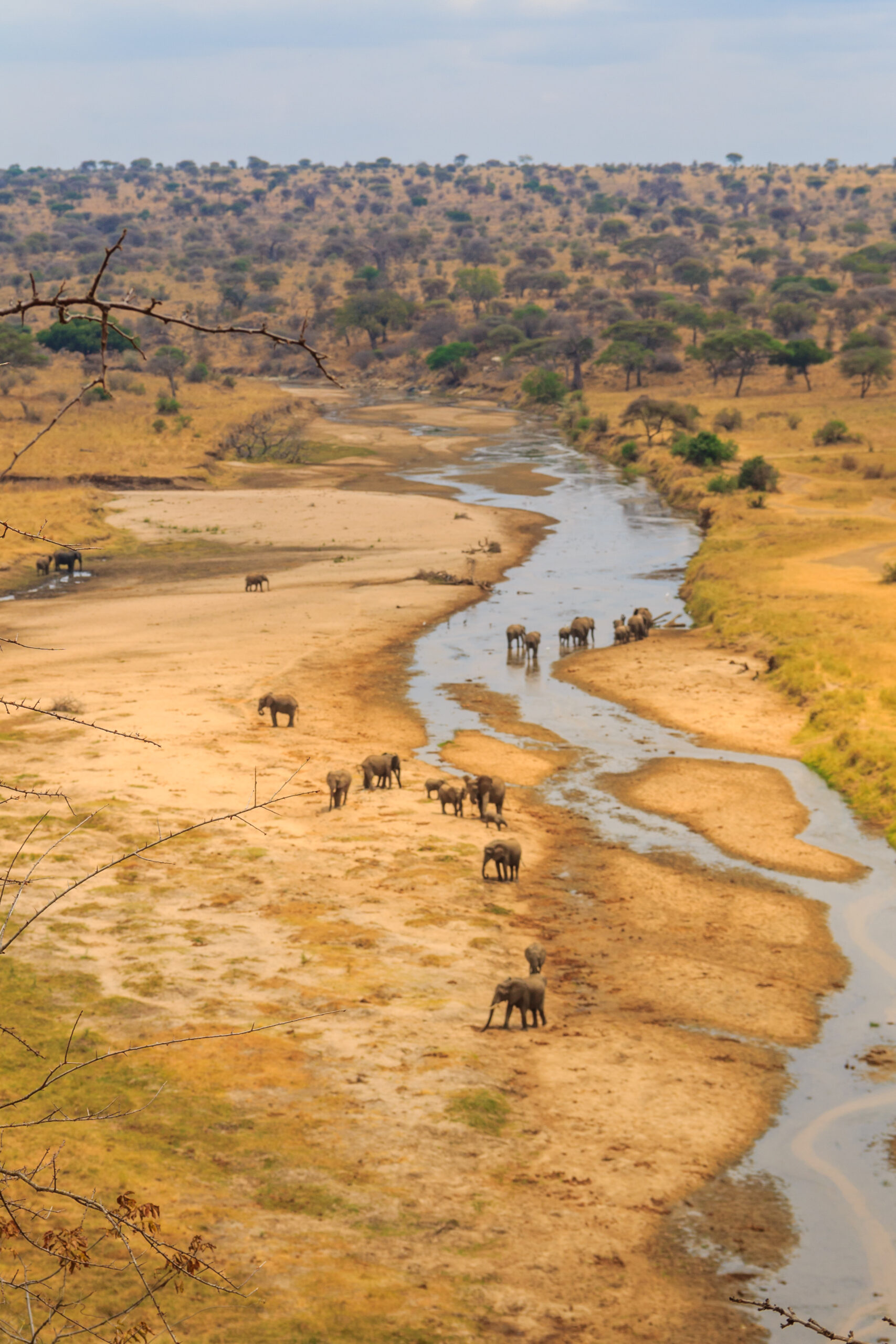
It is named for the Tarangire River which runs from south to north through the reserve. ‘Tarangire’ is said to mean “winding river of warthogs” and while these are plentiful, there is much more to the park that makes it a worthwhile destination.
Overlooked by many as one has to detour slightly from the ever-popular Northern Safari Circuit, the Tarangire National Park is a vast haven for species also found in the more popular national. It has several species not found in the other locations, such as the fringe-eared oryx
It receives considerably fewer tourists, meaning that there is generally less congestion at wildlife sightings and visitors experience an enhanced sense of being in the wilderness.
Tarangire stands out among its peers thanks to an abundance of two of nature’s giants: African elephants and the peculiar baobab tree. Large predators and typical plains game are numerous throughout the dry season. During the dry season, the perennial Tarangire river is the only reliable water supply, attracting vast herds of game and attendant predators. With the rains, the wildlife disperses and many roads become impassable.
Tarangire is a comfortable two-hour drive from Kilimanjaro International Airport (KIA) and Arusha. Various charter flights are available direct to the airstrip in the north of the park, both from KIA and the other national parks.
Tarangire National Park
Highlights
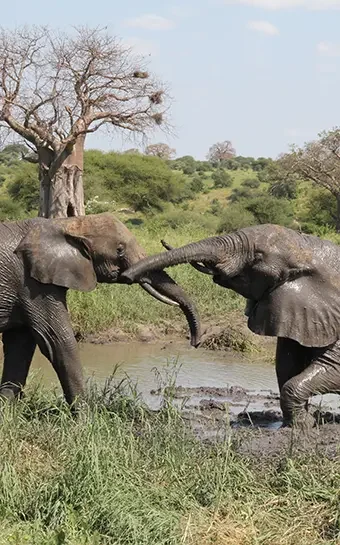
Elephants
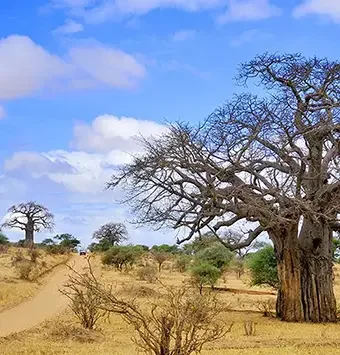
Baobab Trees
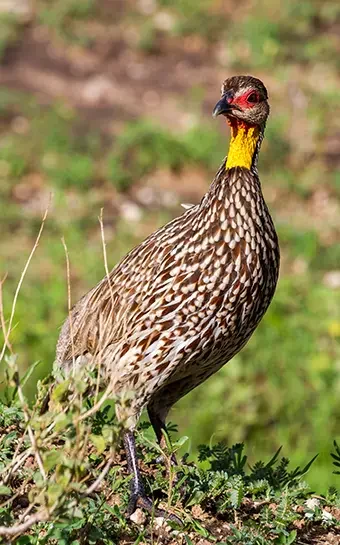
Bird-Watching

Rock Paintings

Mini-Migration
Tanzania’s second largest migration occurs when wildlife converges on the Tarangire River during the dry season.

Unusual Species

Predators
Regions of the Tarangire
Exploring Tarangire: Unveiling the Diverse Regions of Tanzania's Wildlife Sanctuary
Venture into the heart of Tarangire National Park, where the harmonious blend of wildlife habitats beckons with captivating encounters and untold stories of survival. Explore the untamed beauty of the savannahs, woodlands, and riverbanks, revealing nature’s resilient spirit in every corner of this enchanting sanctuary.


Northern Section
The main entrance, airstrip and park headquarters are found in this area. The entrance sits on a bend in the Tarangire River, giving arriving visitors their first glimpse of the park’s most important resource.
Entering the park the terrain is fairly flat, made up of grasslands with occasional woodlands. Standing out amongst the trees are the baobabs, unique for their bulbous trunks that can hold hundreds of litres of water and this is the northernmost limit of their range in Tanzania.
Progressing into the park, the terrain becomes quite hilly, with views of distant Lake Manyara and the Milima Mitatu peaks. During the wet season, Lake Burungi is home to good numbers of hippos, crocodiles and various species of waterfowl, while it sometimes dries completely in the dry season, revealing a sparkling bed of salt crystals. The Silale Swamps are home to a resident lion pride.
Tarangire River
Flowing from south to north through the park, the river can be considered the artery that brings life to the entire national park. As waterholes and seasonal rivers dry up after the rains, animals that had been dispersed for grazing outside the park converge on the river in what is regarded as Tanzania’s mini-migration.
The influx of wildlife into the area, while not on the scale of the Great Migration, is impressive in its own right. And like the scenes witnessed in the Serengeti, the arriving herds attract all of the large predator species.
Year-round, the river is home to a significant population of both hippos and some truly impressive crocodiles. The water and lush vegetation on the riverbanks are a haven for birdlife, and leopards are common in the thickets.
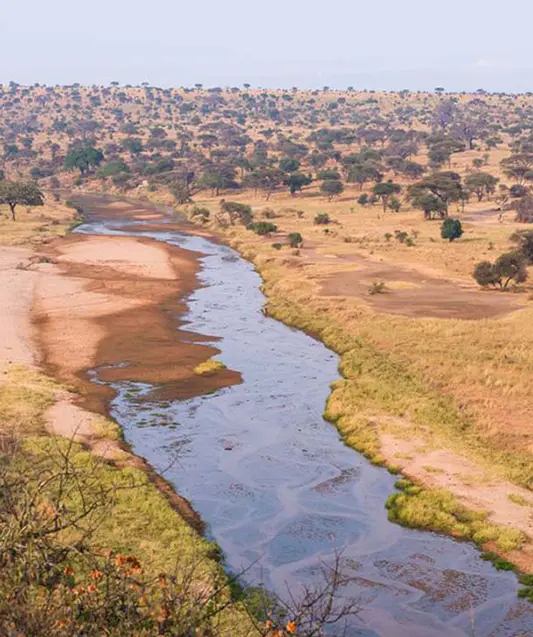



Western Section
The predominant habitat in this section of Tarangire is made up of the nutritious grassland found in the Gursi Plains, along with pockets of combretum and acacia woodlands. The two habitats are favourable for the presence of two of the park’s mega-herbivores, elephants and Cape buffalos.
Other herbivorous species also benefit from the excellent grazing and browsing, making this a good area to spot predators. Good sightings of lion and spotted hyenas are frequently had and the area is also considered the best place to see Africa’s second most endangered large carnivore, the African wild dog (also known as the painted wolf). These highly successful hunters are mostly seen near the Kitibong Hills
Southern Section
For those who truly wish to experience the wild wilderness of East Africa, the southern reaches of Tarangire are a haven of unspoilt remoteness. There is little in the way of infrastructure in this region, with only a few camps and minimal park facilities. Access to many of the roads is occasionally impossible in the wet season, due to the swamps and wetlands that form.
These limitations in human terms, mean that the south is the location for most of the walking safaris offered in the park. For the wildlife, the low number of tourists, along with lower populations of lions and hyenas, mean that cheetahs and ostriches are seen fairly frequently. The swamps and wetlands are also a haven for waterbirds until they dry up in the dry season.
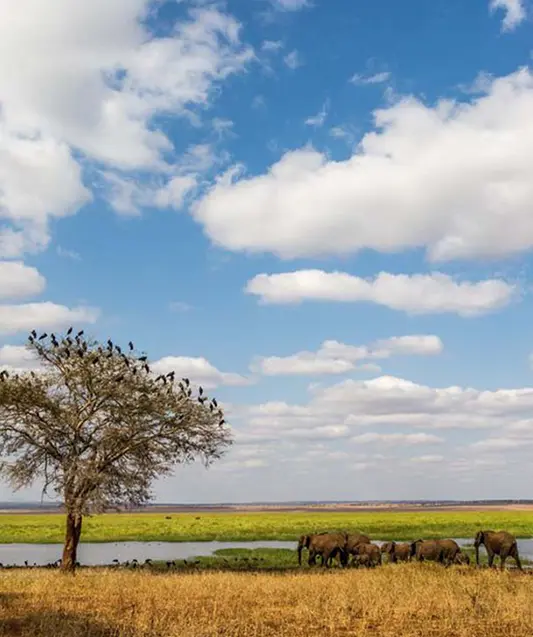

ACTIVITIES
Be one with the nature at Tarangire.
An African Safari is all about viewing wildlife in its natural habitat – but it wouldn’t be complete without social occasions in scenic settings to share the highlights of your adventure.

Game Drives
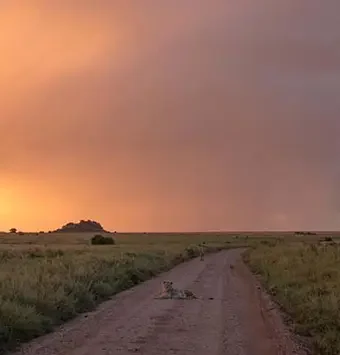
Night Game Drives
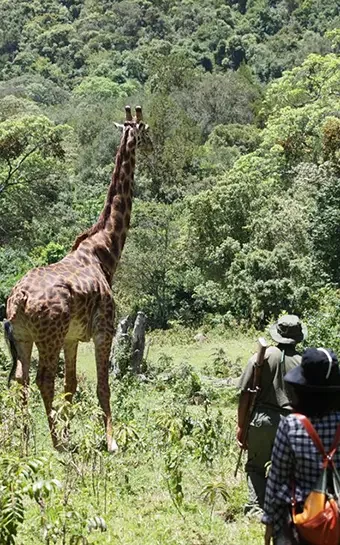
Walking Safari
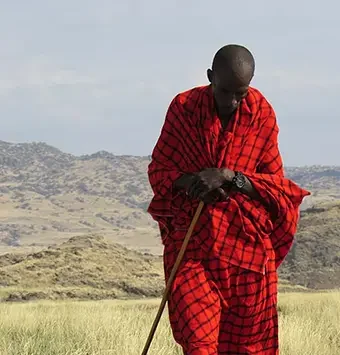
Maasai and Barabaig Cultural Experiences
Visit traditional homesteads for a fascinating glimpse into these ancient cultures.
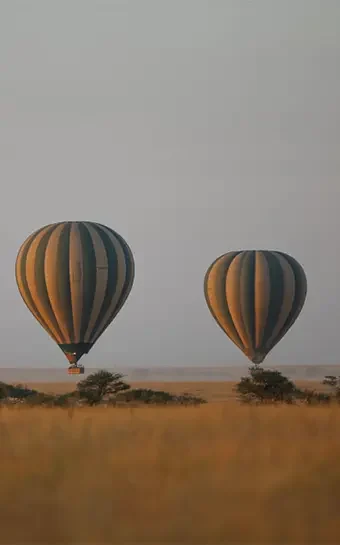
Balloon Safari

Wellness Treatment
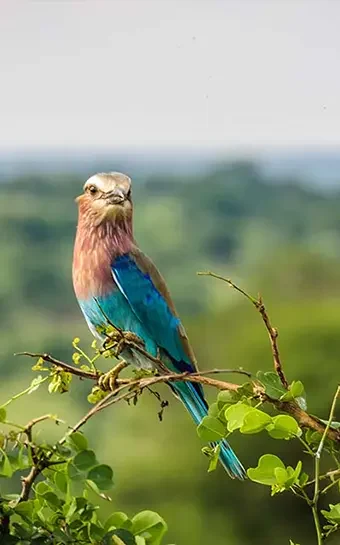
Bird-watching

Rock Paintings
EXPLORE
Our Tours
Wildlife, Landscapes, and Climate
Exploring the Splendors of Tarangire
It should be noted that game-viewing in Tarangire is quite seasonal, and sightings will vary from the dry to wet season. When the rains fall, it means that numerous seasonal rivers and waterholes further afield allow the game to seek grazing away from the perennial Tarangire River. This dispersal is a valuable opportunity for the habitat adjacent to the river to recover from intensive grazing and browsing during the dry season.
As the rainwater dries up, and the grazing on the distant pastures is depleted, migration back to the river is necessitated throughout the dry season, and it is at this time that Tarangire’s wildlife sightings rival the best that Africa has to offer.
Of all species represented, most visitors will remember Tarangire for the huge elephant population. The park is said to be home to up to 3000 of these ponderous pachyderms, with herds occasionally numbering 300-strong. Of the other large herbivores, Cape buffalos are also plentiful, while the various waterholes and the Tarangire River offer a safe haven for hundreds of hippos in the heat of the day. Unconfirmed reports of black rhinos are also had on occasion.
Tarangire is also notable for having some species not found in the Serengeti or Ngorongoro Crater, such as fringe-eared oryx and the otherworldly gerenuk. Coke’s hartebeest, their numbers gravely impacted by habitat loss, also find sanctuary in the park. These aside, visitors will see healthy populations of typical east African plains game; including wildebeest, zebra, impala, warthogs, giraffe, and a variety of antelope. Olive baboons and vervet monkeys can often be seen enjoying a symbiotic relationship with the aforementioned species.
Despite the plentiful eyes and ears wary of predators, Tarangire boasts excellent sightings of all the region’s large carnivores. Large prides of lions vie for dominance of the food chain with clans of equally social spotted hyenas. Solitary leopards are also quite common in the park, if not easily seen. To the south of the park where lions and hyenas are less prevalent, the park’s cheetah population is said to be most concentrated. Arguably your best chance of seeing an African wild dog in Tanzania is within Tarangire. Some of the smaller predators represented are caracal, honey badger and serval.
Over 545 species of birds have been identified within the park. These are mostly resident species, although the diversity swells with the arrival of Summer migrants from November to April. Species endemic to the area include the yellow-collared lovebird, rufous-tailed weaver and the ashy starling. The river and numerous wetlands are host to a diverse array of waterbirds.
Month to Month Average Temperatures
From June until October, the dry season offers the best game viewing, as animals migrate into the park and concentrate along the river. Vegetation is also sparse, improving the visibility of the animals.
During the wet season (November – May) some of the park may be inaccessible due to flooding. However, for bird-watchers, this is when they are at their most diverse and abundant.
Best Time To Go
When to Visit for the Best Experience
June to February
A dry spell occurs after the short rains. The exact timing is difficult to predict.
March to May
Long Rains
Long Rains, On most days, rain occurs, although it rarely rains the entire day. Cloudy skies are common. Cold fronts commonly roll in during April and May causing temperatures to get much colder.
June to October
No rain, typically no rain with temperatures ranging between 26°C/79°F and 14°C/57°
November to December
‘Short rains’, unreliable wet season lasting up to four weeks, with brief showers each day. Daytime temperatures average 28°C/82°F, cooling to 16°C/61°F at night.


